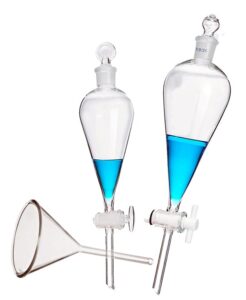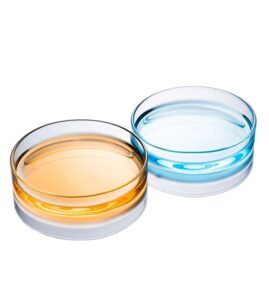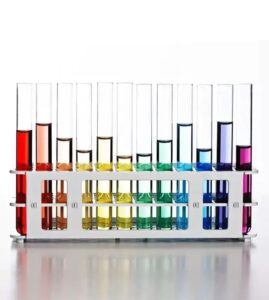How often do we pause to consider the environmental impact of our scientific endeavors? Can the very tools that enable research and discovery also lead us toward a more sustainable future? The quest for greener alternatives has touched every industry, but what about the sanctums of scientific research – the laboratories?
The answer lies in the burgeoning field of “Green Lab Glassware”: a movement towards sustainable design and manufacturing practices in laboratory glassware. This initiative not only promises to reduce the carbon footprint of scientific research but also to inspire a more eco-conscious approach across disciplines.
With innovations sprouting up rapidly, staying informed has never been more crucial.
Why Is “Green Lab Glassware” Gaining Momentum?
Sustainability in the lab goes beyond just reducing waste. It encompasses energy efficiency, water conservation, and minimizing chemical use. Traditional lab glassware, while reusable, often requires energy-intensive production and cleaning processes.
Green lab glassware aims to address these concerns by introducing materials and manufacturing techniques that lower the overall environmental impact. From the use of recycled glass to the development of energy-efficient cleaning protocols, the goal is to make labs greener without compromising on quality or safety.
How Does Sustainable Design Make a Difference?
Design plays a pivotal role in the sustainability of lab glassware. By optimizing the shape and thickness of the glass, manufacturers can ensure that less material is used without sacrificing durability. Additionally, innovative designs can make glassware easier to clean and sterilize, further reducing the lab’s energy and water usage.
The use of biodegradable materials for disposable components and the integration of recycled materials in glass production are other key facets of sustainable design. These steps not only lessen the environmental impact but also pave the way for new recycling technologies and methods.
Embracing Sustainability in Lab Glassware Manufacturing
The scientific sector is increasingly focusing on sustainable practices, particularly in the realm of laboratory glassware. This shift is motivated by the need to reduce environmental impact without compromising the integrity of research. Below are key sustainable innovations and design principles currently shaping the future of lab glassware manufacturing:
- Green Material Selection: Utilizing renewable, recyclable, or environmentally friendly materials, such as composites containing a high proportion of recycled glass, to decrease reliance on natural resources.
- Energy Conservation: Implementing efficient energy use technologies during the manufacturing process, like energy-saving equipment and optimized heating and cooling processes, to cut down on energy consumption and carbon emissions.
- Circular Economy Principles: Designing glassware with its lifecycle in mind, including extending product lifespan, facilitating easy repair and reuse, and recycling and reprocessing at the end of life, to enable resource recirculation.
- Waste Reduction: Minimizing waste generation during manufacturing by employing precise cutting techniques and mold designs to reduce raw material wastage to the utmost extent.
- Social Responsibility: Establishing and adhering to manufacturing processes that meet social and environmental standards, ensuring the safety and welfare of employees.
- Digital Technology Utilization: Applying advanced computer-aided design and simulation technologies for performance optimization, reducing the need for prototype development and testing, thereby lowering resource consumption.
- Supply Chain Management: Developing long-term cooperative relationships with suppliers to set and achieve sustainability goals and action plans, ensuring transparency and ethical operations within the supply chain.
- Advanced Processing Techniques: Using cutting-edge processing technologies to improve the precision and quality of products, thereby reducing the rate of defective goods.
- Ecological Design Principles: Considering the impact on ecosystems in the design process, such as minimizing interference with natural environments, avoiding harmful substances, and optimizing product functionality and efficiency.
- Innovative Design: Driving functional innovation in lab glassware to meet evolving experimental needs, including integrating multifunctional devices, enhancing automation, and incorporating smart features.
The application of these sustainability principles in the design and manufacturing of lab glassware represents a significant step towards the industry’s sustainable development. It not only reduces the negative impact on the environment but also provides better tools for laboratory and research work. As technology advances and awareness increases, we can look forward to even more sustainable design and manufacturing innovations emerging.
What Are the Challenges and Solutions in Manufacturing?
The manufacturing of green lab glassware faces several challenges, including maintaining the balance between sustainability and the stringent quality standards required for scientific research. However, advances in technology are providing solutions. For instance, solar-powered kilns and eco-friendly coolants in the glass cooling process significantly reduce the carbon footprint of production.
Moreover, adopting lean manufacturing principles can minimize waste during production, ensuring that resources are used more efficiently. Collaboration with recycling facilities also ensures that glass waste from the manufacturing process is properly recycled, creating a closed-loop system that benefits the environment.
The Impact on Scientific Research and Beyond
The adoption of green lab glassware has the potential to transform not only the scientific community but also education and industry. By demonstrating that sustainability can go hand-in-hand with scientific progress, labs can inspire future generations to prioritize eco-friendly practices in all aspects of their work.
Furthermore, the principles of sustainable design and manufacturing in lab glassware can be applied to other industries, encouraging a broader shift towards environmental responsibility.
Innovations in Green Lab Glassware: What’s New?
As the green movement within scientific laboratories gains momentum, innovative solutions are constantly being developed and implemented. These range from advancements in material science to revolutionary production techniques. For instance, the introduction of glassware made from borosilicate glass that is not only more durable but also requires less energy to produce, is a notable advancement.
Another exciting development is the use of 3D printing technologies to create lab glassware. This allows for the production of custom pieces with minimal waste, as materials can be precisely applied without the excess typical of traditional manufacturing processes. Furthermore, 3D printing enables the use of sustainable materials, such as bioplastics, in the production of certain lab components.
The Role of Certification and Standards
For green lab glassware to make a substantial impact, it must be recognized and standardized across the scientific community. This is where certification programs and sustainability standards come into play. Certifications, like the ISO 14001 environmental management standard, provide a framework for assessing the sustainability of lab glassware. These certifications encourage manufacturers to adopt greener practices and help labs identify products that meet their sustainability goals.
Furthermore, the development of specific sustainability standards for lab glassware can guide manufacturers in reducing their environmental impact. These standards can cover everything from the sourcing of raw materials to the end-of-life recycling of the products, ensuring a holistic approach to sustainability.
The Economic Perspective: Cost vs. Benefit
One of the major questions surrounding green lab glassware concerns the economic impact. Initially, eco-friendly options may come with a higher price tag due to the cost of sustainable materials and the investment in innovative manufacturing technologies. However, when considering the long-term benefits, including reduced waste, lower energy consumption, and the potential for reduced disposal costs, green lab glassware proves to be cost-effective.
Moreover, as demand for sustainable products increases and production technologies advance, the costs associated with green lab glassware are expected to decrease, making it an even more attractive option for laboratories around the world.
Educating and Inspiring the Next Generation
The transition to green lab glassware is not just about changing materials and processes; it’s about fostering a culture of sustainability within the scientific community. Education plays a crucial role in this. By integrating the principles of green chemistry and sustainable lab practices into the curriculum, educators can prepare students to think critically about the environmental impact of their work.
Moreover, showcasing real-world examples of green lab glassware in action can inspire both current and future scientists to prioritize sustainability in their research. This cultural shift is essential for the long-term adoption of green practices in science.
Looking Ahead: The Future of Green Lab Glassware
The future of green lab glassware looks promising, with continuous innovations and a growing commitment from the scientific community. As we move forward, collaboration between manufacturers, researchers, and policymakers will be crucial in driving the adoption of sustainable practices.
The integration of new materials, technologies, and designs will continue to reduce the environmental impact of scientific research. Meanwhile, the emphasis on education and cultural change will ensure that sustainability becomes a core value in laboratories around the world.
Conclusion
The shift towards green lab glassware is not just a trend but a necessary evolution in scientific research. As stewards of the planet, the scientific community has a pivotal role in leading by example, demonstrating that innovation and environmental responsibility can go hand in hand. Let’s embrace these changes, champion sustainable practices in our laboratories, and inspire the next generation of scientists to do the same. Together, we can make a significant impact on the world, one green lab at a time.










